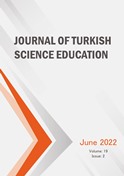The Views of academicians and specialists on STEM and related concepts
Research Article
Keywords:
STEM education, STEM, Industry 4.0, Maker, entrepreneurship, roboticsAbstract
This study aimed to determine the perceptions of academics from different faculties and experts from non-governmental organizations, and Research & Development (R&D) centers of the concepts of STEM, innovation, entrepreneurship, industry 4.0, robotics, coding, maker, artificial intelligence, and their reflections on the daily life. In addition, within the scope of the research, opinions about the status of entrepreneurship and innovation capacity in the universities and what should be done in the short, medium, and long term regarding these concepts were also examined. A case study, one of the qualitative research models, was used in the research. The research was carried out with the participation of a total of 24 people, including academics from different faculties and experts from non-governmental organizations and R&D centers. The opinion form for the concept, entrepreneurship, and innovation was used as a data collection tool. In the first part of the form, the concepts of STEM, innovation, entrepreneurship, industry 4.0, robotics, coding, maker, and artificial intelligence concepts and their examples were investigated. In the second part of the form, an evaluation of the current situation (problems and current studies) of entrepreneurship and innovation capacity in Universities and especially education faculties were inquired. Additionally, it was asked what needs to be done in the short-, medium-, and long-term regarding concepts. The qualitative data obtained were evaluated using descriptive statistics. It has been revealed that academics from different departments have different definitions of STEM and other concepts.
Downloads
Downloads
Issue
Section
Published
License
Copyright (c) 2022 Journal of Turkish Science Education

This work is licensed under a Creative Commons Attribution 4.0 International License.
